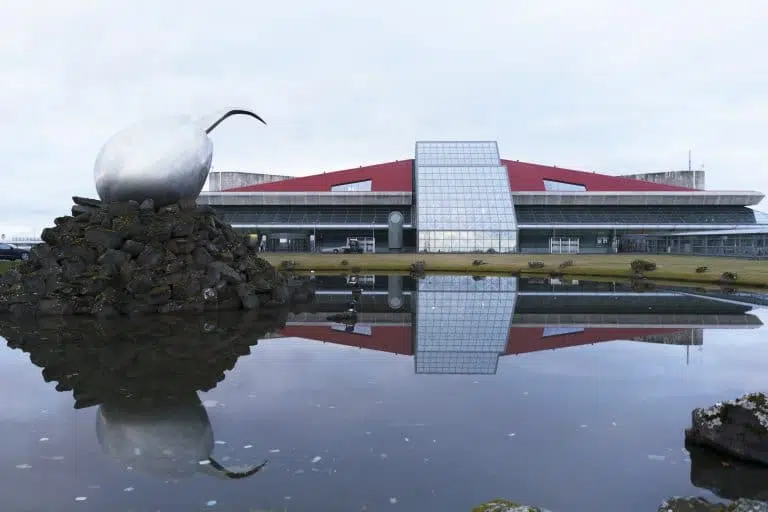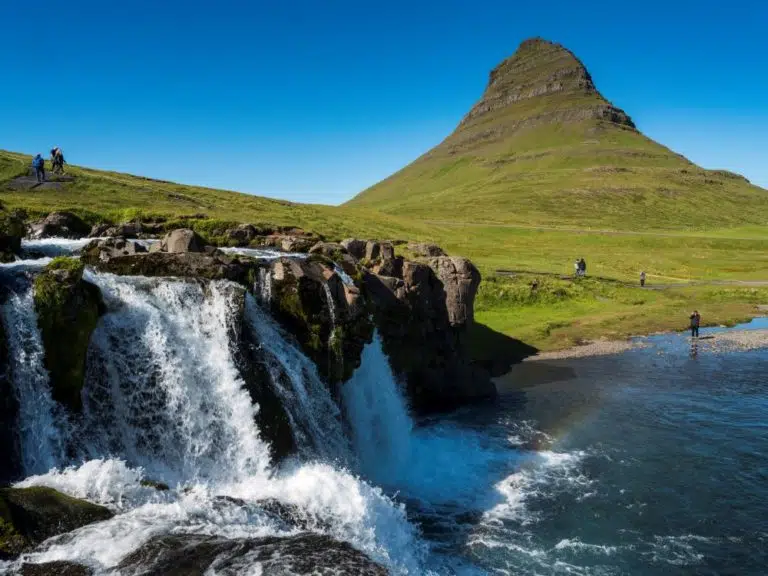One of the most extraordinary places in Iceland is Þingvellir National Park. Located within the Golden Circle route, Þingvellir park offers a unique geological and historical experience unlike any other. As the site of Europe’s first parliament, established in 930, Þingvellir played an important role in Iceland’s cultural heritage. Additionally its a place of very unique geological features as you can walk through a rift valley between two continents. In this Þingvellir guide, you will find information that will help you make the most of your visit to this historic Icelandic landmark.
How to get to Þingvellir
The national park is located approximately 40 km [131 mi] northeast of Reykjavík city and is easily accessible by car via Route 36 and is usually either the first or last stop of the Golden Circle tour. Þingvellir is easily accessible by car and the journey will take about 1 hour, depending on traffic conditions.
Exploring Þingvellir area
When you visit Þingvellir National Park the first thing to keep in mind is to take your time. The area has so much to see and given its rich history there is a lot to learn and explore. Here are some of the highlights:
Þingvellir´s Visitor Centre
At the visitor centre you can learn about the history and significance of Þingvellir through exhibits and displays. This way you have introduced yourself to the captivating history of the sights you are about to see.
Lögberg (Law Rock)
Is one of the ancient assembly sites in the park. This is where the lawspeaker read the law of the land during the annual assembly of Alþingi parliament. The laws were proclaimed and settled and anyone attending could make their argument there. The exact location of Lögberg is unknown due to the changing geography of the area but two possible locations have been identified, one of which is marked with a flag pole.
Almannagjá gorge
This is one of Iceland’s most magnificent geological wonders. The rift valley known as Almannagjá is where the Eurasian and North American tectonic plates are slowly pulling apart. You are able to walk between the two tectonic plates through the gorge and admire the rugged cliffs and landscapes shaped by millennia of tectonic activity. Be sure to look up and try to see the troll-faces engraved in the cliffs.
Silfra fissure
While on the topic of two tectonic plates it is worth mentioning Silfra fissure. This fissure lies at the rim of Þingvallavatn Lake and is very large and deep. Here you can have a very unique experience of diving or snorkeling between two continents in the clear blue, glacial waters of Silfra.
Öxarárfoss waterfall
This waterfall is just as beautiful in the summer as in the winter. During the cold months the waterfall can freeze which makes for an extremely unique and beautiful sight. The waterfall is located near the parking lot of Þingvellir National Park and falls around 12 metres [39 ft] from a beautiful, square lava cliff.
Drekkingarhylur pool
This pool of water, originating from Öxará river, is one of the places in Þingvellir with the darkest history. The name of the pool literally translates to The Drowning Pool, and that is exactly what it was. Here women were drowned as punishment for either having a child out of wedlock or when committing the crime of incest. Records show that 18 women were drowned in the pool, with the last one being executed in 1739.
Þingvallakirkja church
The Þingvallakirkja church within the national park was built in 1859 but according to the Icelandic saga´s a church has been standing there since 1017. The church is closed to the public unless staff is present but it is possible to look through the windows or participate in free guided tours with one of the rangers, usually starting around 10 AM.
Practical tips when visiting Þingvellir National Park
- How much time do you need at Þingvellir
Make sure to have enough time as it is quite easy to spend up to two hours exploring the area. The National Park is big and there is a lot to see and read about. Enjoy the walk and learn as much as you can about this remarkable, historical site. - Safety first
Always respect warning signs and closed off areas while walking through the park. Designated walking paths are always available and restricted area´s are marked off with ropes or signs. Þingvellir is a natural reserve and both flora and fauna get to stay in peace. - Accessibility
Even though Þingvellir National Park is easily accessible by car, exploring the area has to happen on foot. Therefore it is advisable to wear good and comfortable walking shoes and dress appropriately.
- Picnic areas
Pack a picnic, especially during the summer months. There are designated picnic areas and benches available throughout the park and it can be a great opportunity to have a little refreshment amongst the magnificent views of the valley.
A visit to Þingvellir National Park should be on the travel itinerary for every person visiting Iceland. Its rich history and natural beauty are unparalleled and it’s the perfect place to walk through some of Iceland’s most important historic sites with your own two feet. Whether you are tracing the footsteps of the Vikings or awestruck by the geological wonders, experiencing Þingvellir will leave you with a deep appreciation for Iceland’s cultural and natural heritage.






